At the beginning of each November, a special two-day celebration takes place – Dia de Los Muertos, which you may know by its English name – the Day of the Dead. During this time, families welcome back their deceased relatives, and, contrary to what you might imagine, many colorful and cheerful activities take place. To learn more about the history behind the unique celebration and how you can honor it in Puerto Vallarta, Cabo, and Cancun, keep reading this article.
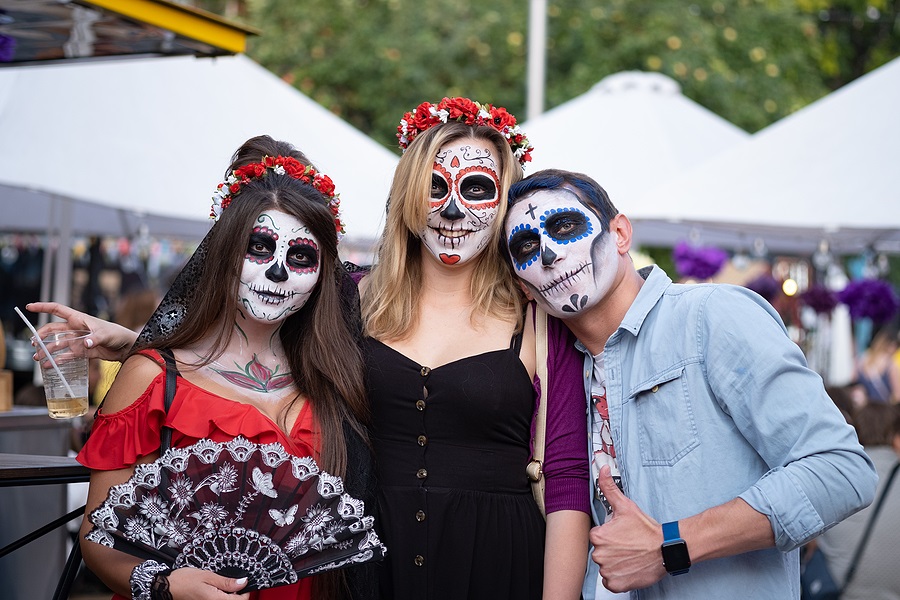
For people living outside of Mexico, the Day of the Dead might seem like an unusual celebration. Why would you celebrate death? But, the idea behind it is quite beautiful. During the Day of the Dead, the people of Mexico honor and remember loved ones who have died. As Mexicans believe, the spirits of those close to their heart can return to the world only for one night in the whole year. Traditionally, on November 1, they honor deceased children, while on November 2 they honor adults who have passed away. Thus, although the celebration is related to death, it is actually considered to be a joyous event. That is why the Day of the Dead is celebrated passionately throughout Mexico, especially in smaller provincial towns and cities. In most cities, during this time you may see many parades and exhibitions as people are joining in the celebration. 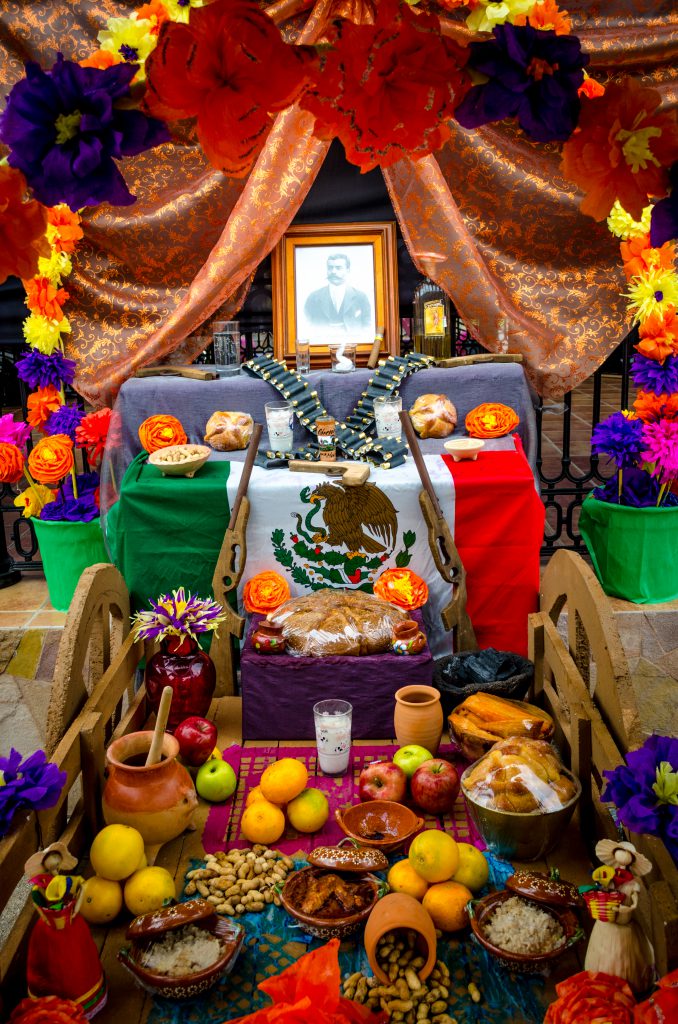
The history behind the Day of the Dead dates back to several thousand years ago. The Aztec, Toltec, and Nahua people believed that mourning the dead is disrespectful. In these cultures, death was regarded as a natural part of life. Therefore, the dead should be kept alive in memory. Nowadays, Día de Los Muertos and its way of celebration have changed slightly since it has become a combination of pre-Hispanic religious rites and Christian feasts.
A unique part of the celebration and perhaps its most significant part is the creation of an altar, or ofrenda, which is typically built-in private homes and cemeteries. However, these are not your regular altars, made for worshipping. These sacred objects are believed to welcome spirits back to the living. That is why altars are filled with all kinds of offerings – from water to satisfy the thirst after the long traveling, to family photos, and food. If one of the dead is a child, you might even find small toys on the altar. Of course, in each city and town, and even family, ways of decorating altars can differ. Usually, the altars are covered in marigolds.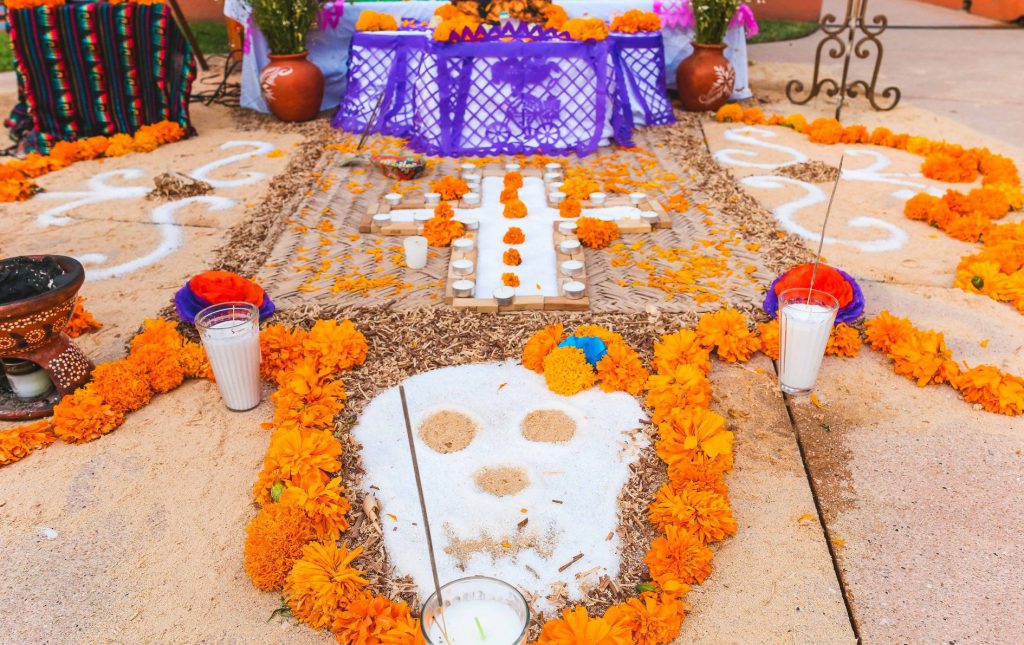
During the time of the celebration, you may also notice literary Calaveras (which means “skull”) in print, television, and radio programs, as well as simply read aloud among people. During the late 18th and early 19th centuries, Calaveras were considered to be short, humorous poems that usually had a sarcastic tone. Typically, they made fun of the living. As time went on, they became a popular part of the Day of the Dead celebrations, and today the tradition is as alive as ever.
In the unusual celebration, costumes (and also fashion) have a major role too. Since it is an extremely social holiday that seems to take over all of the streets and public squares no matter the hour of the day, it seems only logical that looking the part is so important. So what do you wear during the Day of the Dead? Dressing up as skeletons is probably one of the most exciting parts of the festivities. People of all ages color their faces, mimicking skulls, while some try to look like the Calavera Catrina and put their best dresses and suits on.
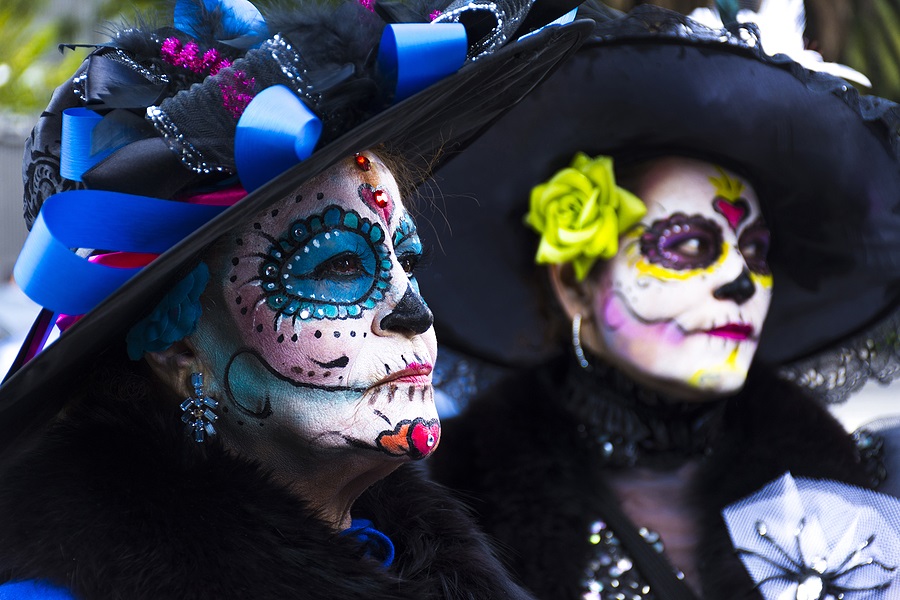
Today, thanks to recognition by UNESCO (United Nations Educational, Scientific and Cultural Organization) and, of course, the internet, the Day of the Dead is more popular than ever. What is more, it is now even celebrated outside the borders of Mexico. But, of course, to get the most authentic experience, you must observe the Día de Los Muertos in Mexico. Don’t forget to stop by the grand parade and dance your troubles away in the live music or try any of the other fun activities throughout the cities. Of course, the style of celebration may vary, depending on the region and its predominant pre-Hispanic culture. But when visiting our resorts, you may be sure to have an excellent Day of the Dead celebration.
Puerto Vallarta & Riviera Nayarit
Looking to get your dose of culture and art? Then Puerto Vallarta is undoubtedly the best place to spend the Day of the Dead. In the days leading up to the celebration, giant Catrina statues are set up along the beautiful Malecon boardwalk. Taking a stroll among these art displays is a great way to get into the festive mood, especially because each has its own unique yet traditional style. Like other cities and towns in Mexico, cleaning and holding vigils at gravesites is also an important tradition in Puerto Vallarta. The main cemetery can be found in the Cinco de Diciembre neighborhood, and the walls of the spiritual place are usually decorated with bright murals of Catrinas (which symbolizes the Queen of the Underworld). The culmination of the celebration is on November 2, when the parade takes place. Starting from the cemetery and way up to the downtown, you will notice small floats, charro cowboys, and people dressed up like Catrinas. Walk and admire how most streets are turned into colorful flowered runways, showcasing how beautiful this tradition is. 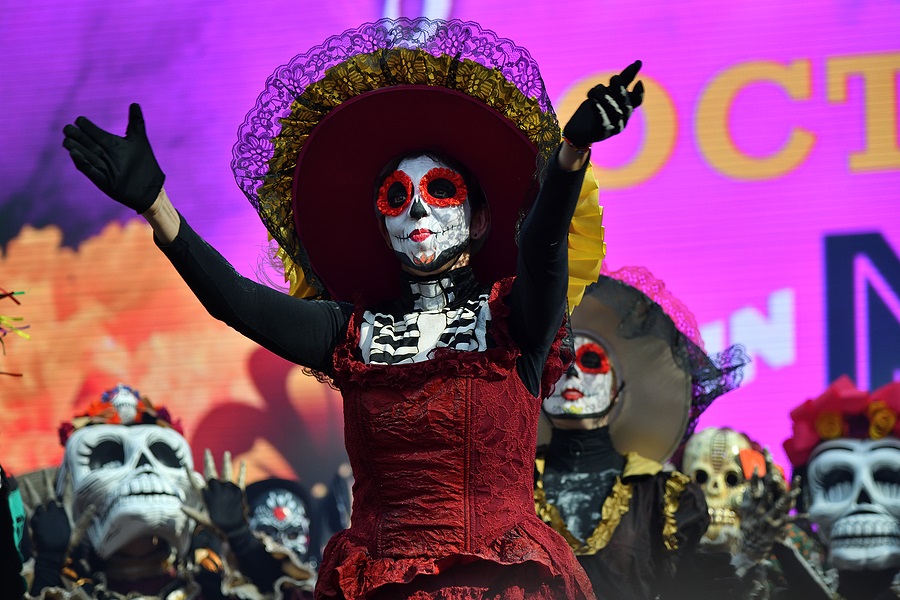
Cabo
Of course, Cabo is no exception when it comes to celebrating the Day of the Dead. The beginning of November is the perfect time to escape the cold (if you are living north) and to travel south to Cabo San Lucas. Throughout the festive time, you will find the city lit up in beautiful lights and colorful decorations. At the time of the celebration, a competition is held for building the grandest altars. All of them are displayed in the main square, Plaza Amelia Wilkes. To see the most stunning examples, take a stroll through the plaza and see who is pronounced the winner. But showcasing stunning alters is not the only festive activity in Cabo San Lucas. Other traditions such as cleaning cemeteries and decorating the gravesites are also well known. To have a taste of local customs, you may respectfully visit the main plazas in Cabo San Lucas or San Jose Del Cabo. Finally, don’t forget to stop by the famous Art Walk in San Jose Del Cabo, which is held every Thursday from 5 PM to 9 PM from November until June. Since the first week lines up with Day of the Dead, you can expect unique displays and galleries showcasing traditional folk art. 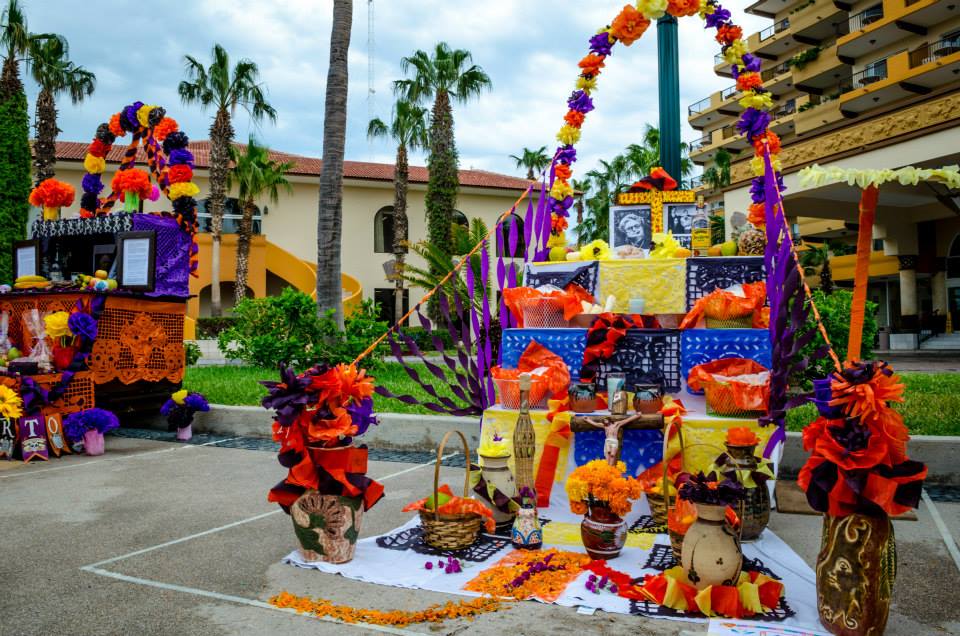
Cancun
The stunning resort-town is well known for its marvelous parties, and the Day of the Dead is no exception – each year, Xcaret Park holds Festival de Tradiciones de Vida y Muerte (Festival of Life and Death Traditions). During the event, you will get the chance to learn more about the Mexican celebration (and also the Mayan version of the holiday – Hanal Pixan) through theater, dance, expositions, music, and food. And when it comes to delicious meals, during the Day of the Dead, you must taste the deliciously sweet pan de Muerto – and anise and orange-scented egg breach which is created in the form of a skull. A colorful parade is also held in downtown Cancun. The event is known as Festival del Dia de Muertos (Cena de Animas), and it is a great place to see traditional dances and hear all styles of music. 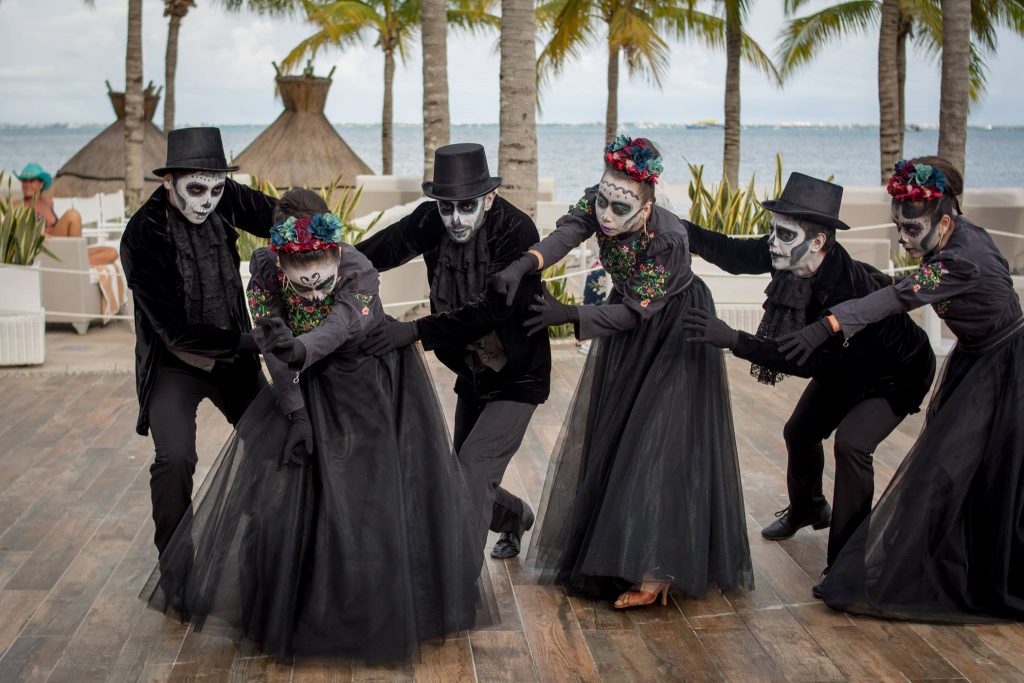
In addition to the celebrations happening in town, the Villa Group Resorts have an altar contest onsite amongst the staff. Members and guests can participate by judging this contest. Additional details will be announced during the week of the Day of the Dead onsite at each of our resorts, so please ask your concierge for more details.
The Day of the Dead is another showcase of how beautiful Mexican culture really is. Whether you choose to spend the celebration in Cabo, Puerto Vallarta, or Cancun, you are bound to fall in love with the tradition and the magic of it.
Please note that Day of the Dead Festivities are subject to change at any time with or without notice.

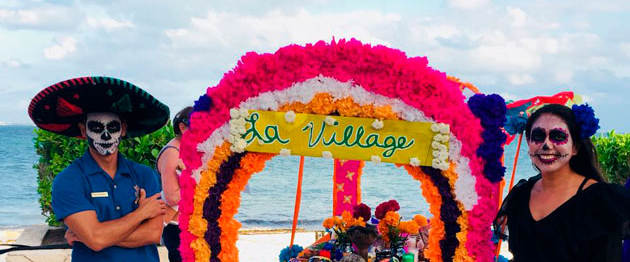
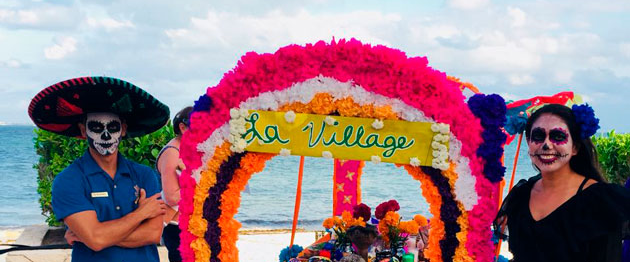
Excellent article: I learned so much! Thank you for the in-detailed explanation AND what is going on in each city!
Dany and I LOVE being in Cabo for Halloween and Day of the Dead and look forward to being there again this year!